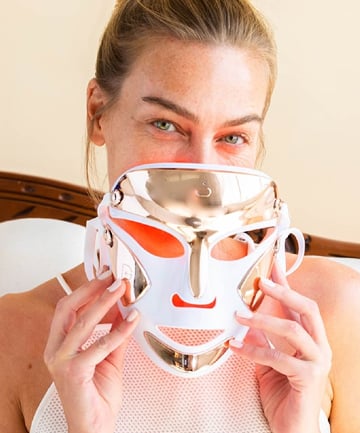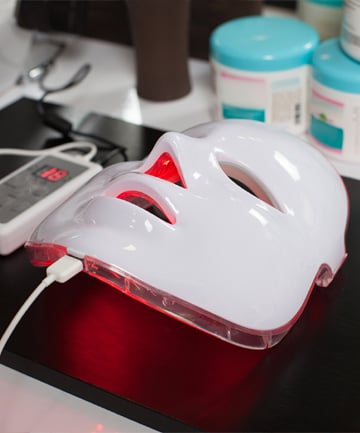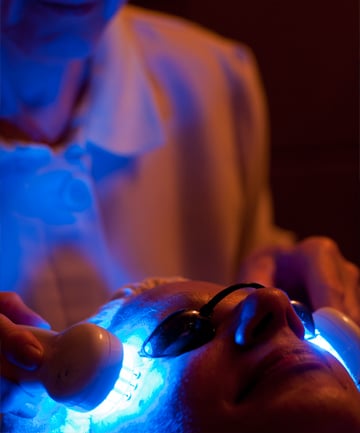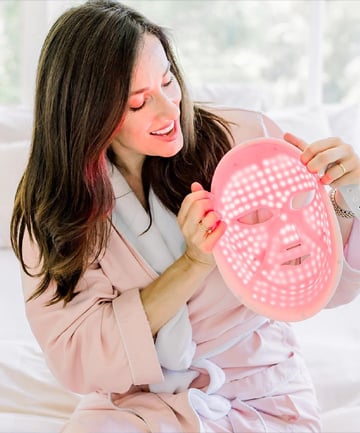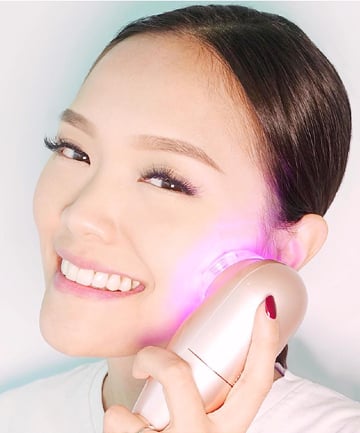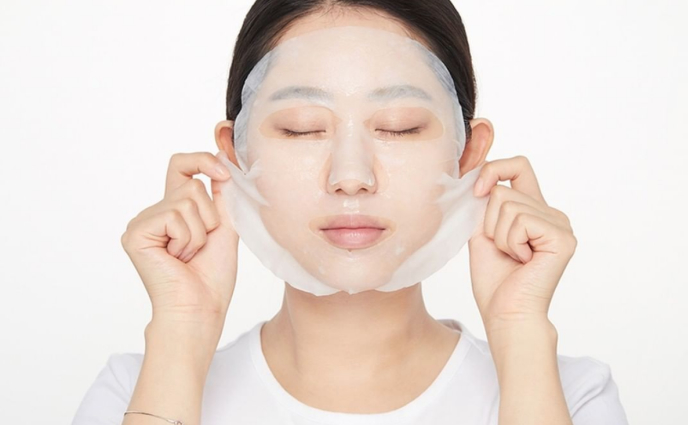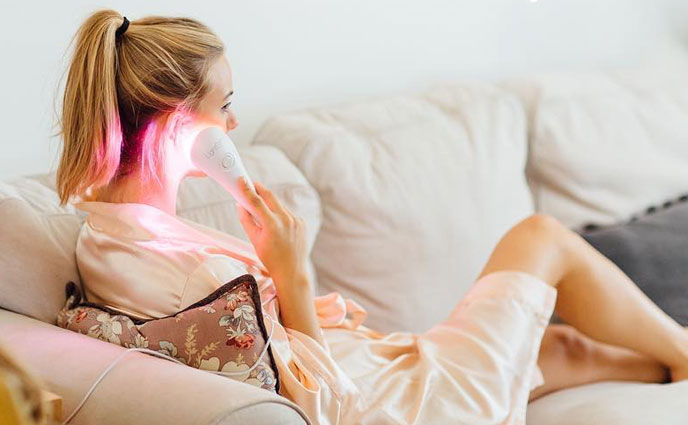"From reputable makers and manufacturers, we can generally expect safe standards when [at-home LED masks are] used as directed," says Shamban. She continues that the intensity of at-home devices is usually significantly less than in-office versions, which are monitored at all times by licensed professionals. At-home versions can include different wavelengths of light (e.g. red and blue). The treatments can be timed to automatically shut off when finished. For example, the Dr. Dennis Gross Skincare SpectraLite Faceware Pro, $435, will automatically shut off after three minutes.
Some at-home treatments could be used on a daily basis. The Angela Caglia CellReturn LED Wireless Mask, $1,900, can be used up to 20 minutes daily after cleansing. It is suggested users use the MZ Skin Light-Therapy Golden Facial Treatment Device, $625, two to three times a week starting with 10 minute sessions and gradually working up to 30 minutes.
Image via @drdennisgross
They're Not Tailored to Individual Needs: With in-office LED therapy, dermatologists are able to assess skin's needs and tailor the procedure to each person. That obviously doesn't happen with at-home LED devices and masks. And one size doesn't necessarily fit all: Rabach points out that not every patient may require the same amount and duration of treatment.
User Error: In our immediacy-driven world, we want results and we want them now. That can make people guilty of ignoring instructions and pushing treatments more. "Just because some is good, more is not better or best," cautions Shamban. "Following the directions and manufacturer guidelines of any home skin tool or device is paramount to its success and safety." Failing to do so could lead to irritation and other side effects.
Not Prepping Skin Correctly: To go along with the previous point, it is also important to prep skin as directed. That includes everything from washing your face to applying/not applying certain products. Some devices have products that can be applied before and after. Ignore the prep and it's at your skin's risk.
LED Masks and Sensitive Skin: Shamban says that potentially those with sensitive skin can safely use LED masks. That said, she suggests checking with a board certified dermatologist before using LED devices at home, particularly if you have any skin conditions, like rosacea or melasma. Additionally, the devices should be used with caution by people who are using medications like Accutane, retinols, glycolics or antibiotics that make skin more sensitive to light, per Rabach.
Image via Nomadsoul1/iStock/Getty Images Plus/Getty
Another important detail? When using at-home LED devices, you must remember to protect your eyes. Full stop.
Eye damage is especially a concern for certain people with eye-related disorders, like ocular albinism or congenital retinal disorders, says Rabach. Additionally, people who take medications that make them more sensitive to light may experience blurry vision, eye pain, eye irritation and/or changes in vision. She says that more serious problems include irreversible peripheral vision loss or complete impairment.
"Our eyes have macro sensors which could be effected or degrade over time. But, for damages there would need to be a significant overload or cumulative exposures, or damage at bright and high intensity," reports Shamban. "Complications or adverse reactions — while generally very rare — would be light sensitivities, redness or dry eyes."
Therefore, always, always wear goggles when using light treatment masks, even if they aren't provided with the device. (In the case of professional treatments, Shamban says that in her practices they always administer treatments with eye goggles and recommend patients keep their eyes closed for the entire duration of treatment.)
Image via leezsnow/iStock/Getty Images Plus/Getty
Concerned about getting sun damage while using an at-home LED mask? This is one area users don't have to stress about. Rabach says that LED does not contain UV light. Licensed Esthetician and Founder of StackedSkincare Kerry Benjamin says that she has encountered a few studies that suggest LED treatments produce a very small amount of UV radiation, but none have shown that there's enough UV light to cause the typical problems associated with UV damage (sunburns, skin cancer, vision problems). Therefore, using sunscreen during treatment is not necessary. Similarly, Shamban says that photoallergy and phototoxicity generally result from UV exposure, not LED.
Image via @angelicacagliaskincare
There are LED masks that slip over the entire face then there are smaller handheld wands that target specific areas. Rabach says that at-home wands are less effective than masks because the placement of the mask ensures that every part of skin treated has the same level of light. With wands, it is more difficult to apply the light evenly. Furthermore, masks are hands-free and wands obviously aren't. On the flip side, Benjamin says that wands are likely safer for vision because they're moving around the face.
Image via @iloveskininc


